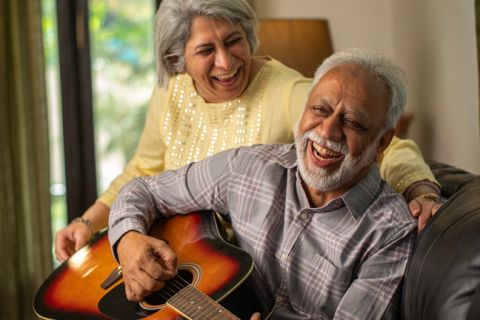Technology helps seniors stand tall
Ageing and falls seem to go hand-in-hand, but this need not be so. Falls are preventable.

A hidden epidemic
Falls are the leading cause of injury-related hospitalisations. Every day, 400 older Australians are being admitted to hospital because of a fall.
What causes falls?
Poor balance, weak muscles, and slow reaction times.
Environmental hazards such as poor lighting, loose rugs, or unsafe shoes.
Vision and hearing problems and wearing multifocal glasses outdoors.
Medications that cause dizziness or drowsiness.
Changes in mood, thinking, or memory.
Getting out of a chair or bed too quickly.
Some chronic conditions such as diabetes, low blood pressure, and arthritis might increase your risk.
The good news is that falls are not an inevitable part of ageing; they can be prevented!
What you can do now:
Regular balance exercise is one of the most effective ways to reduce your risk.
Clearing clutter, securing loose rugs, and improving lighting can make your home safer straight away.
Regular health check-ups with your GP help uncover things like medication side-effects or any other health changes that may increase your risk.
Information on preventing falls is available here.
“Having a fall” is often used as a gentler synonym for describing a person’s damaging meeting with age and gravity, often caused by underlying gradual physical and mental changes, and hazards around the home and elsewhere.
Falls can be life changing and are often the thing that takes a person from independent living in their own home into residential age care.
Of course, falls are not confined to older people. One in four Australians will have at least one fall this year – costing the national health bill nearly $3 billion. It’s just that, as a rule, recovering from a fall takes longer and comes with complications the older you get.
Even when falls don’t cause an injury, they often trigger a loss of confidence in an older person and lead to an ongoing fear of falling. Over time, this can lead to a person becoming less active, which further increases the risk of falling.
Six out of 10 falls happen in and around the home. Common household hazards include:
Poor lighting
Unsafe footwear, such as loose slippers or narrow heels
Slippery surfaces, such as wet or polished floors or spills
Trip hazards such as rugs, floor mats, and electrical cords
Steps or uneven surfaces.
Older people who don’t keep physically active may have poorer balance and weaker muscles, which can increase the risk of falling.
Not eating well and/or not drinking enough water can lead to dehydration or malnutrition, which can make it difficult to stay strong enough to move about safely.
Exercising more and taking better care of yourself can be challenging, so like so many aspects of modern life, technology has been developed to come to our assistance.
Created by Neuroscience Research Australia (NeuRA) in collaboration with digital development company, The Miroma Project Factory, StandingTall is heralded as the first app of its kind in Australia.
It works on your phone or other mobile device and provides a self-managed exercise program designed to improve balance, restore confidence, and reduce fall-related injuries in people aged 60-plus.
It features more than 800 balance-focused exercises, tailored to the user’s ability, automatically adapting as they improve.
Professor Kim Delbaere, director of innovation and translation at the Falls, Balance, and Injury Research Centre at NeuRA says the app is easy to use, works offline, and requires no special equipment. It can be used at home, in aged-care services, and across regional and remote communities.
StandingTall is based on more than a decade of research and development, including clinical trials involving more than 2,000 older Australians. NeuRA says the results of the trials showed a 20% reduction in fall-related injuries, with many users also reporting improved confidence and greater independence in daily life.
According to Professor Delbaere, “The evidence says that it is important to challenge your balance for two hours per week for a minimum of six months, but many people don’t know where to start or how to access the right support.”
While the app currently has a monthly subscription fee, NeuRA says it is working with health services and aged care providers to provide the program at no or reduced cost.
Related reading: Standing Tall, NeuRA, Health Direct





